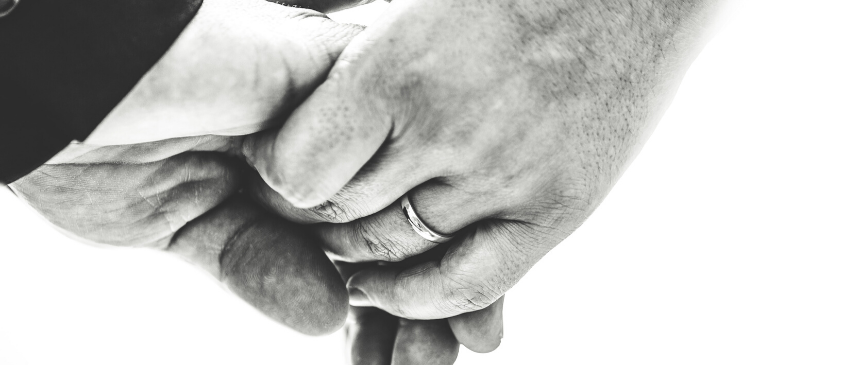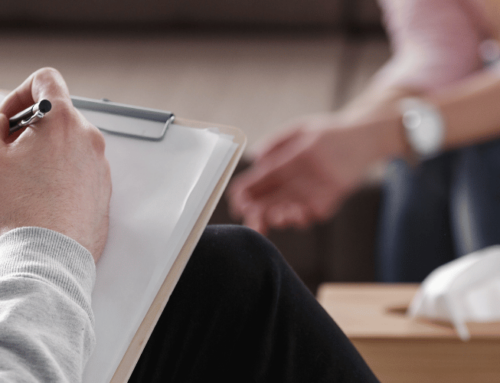How do our earliest relationships influence our adult relationships? Attachment theory provides powerful insights into how our attachment style, established in childhood, impacts us for years to come. First published in Threshold Magazine in 2011, this article explores attachment in marriage.
Introduction
Attachment Theory is rewriting the way we understand human psychology and relationships. First noted by John Bowlby observing orphaned infants in post-war Europe, Attachment Theory in its contemporary form is attracting the attention of varied professions and even the Vatican! [i]
For centuries our understanding of human relationships has been largely dominated by arguments over the predominance of genetics or environment (i.e. the nature-nurture debate) in determining the functionality of the individual in their relationships and society. Attachment theory tells us that the human person is a complex interaction of both biology and environment; that in fact, our relational style is the result of our early interactions which modify brain function and so set in place a pattern of relating for our adult relationships. Incorporating modern insights into neuroplasticity, genetics and parental nurturing experiences, Attachment Theory illuminates the underlying causes of many disruptive relationship patterns and behaviours later in marriage.
Attachment Theory in a nutshell
Attachment Theory accounts for how individuals form emotional bonds with significant others in order to meet basic needs and how psychological disturbances, such as depression and anxiety, are linked to disruption of those bonds. Every person is born hardwired to form attachment bonds. The human infant is dependent on caregivers not only for his physical needs (food, shelter, bathing etc) but also for his emotional needs such as for affection, stimulation and the soothing of distress.
When these needs are met in a consistent and timely manner by a primary caregiver, the infant develops a “Secure” attachment style. The primary caregiver (which may be more than one person and is characterised by his/her consistent availability to the child) provides a ‘secure base’ from which the child explores the world and is a ‘safe refuge’ in unfamiliar settings, in the presence of strangers, or during times of stress. [ii]
As the child ages, he becomes more adept at self-soothing and managing his own needs until he is eventually an independent adult. His ‘Secure’ Attachment style provides him (or her) with a solid base to form adult bonds. He is capable of healthy interdependence in his marriage and is responsive and empathetic towards his spouse. An estimated 50 per cent of the population has a Secure Attachment Style.
However, if during the first three years the child’s needs are not met in a consistent and reliable manner, the child may develop an Insecure Attachment style. This is a self-protective adaptation that the child develops to deal with the absence of a secure base and safe refuge. Insecure Attachment Styles can take one of three forms:
- Anxious (or anxious –ambivalent)– the child becomes needy and demanding, needing reassurance of security and support of the caregiver. As an adult, the Insecure Anxious person is often demanding in a relationship, ruminating about their partner’s reliability and attentiveness. An estimated 20 per cent of the population falls into this attachment category.
- Avoidant – the child develops a self-protective independence. As adults, these individuals are often dismissive and resist intimacy in favour of protecting their autonomy. Affecting around 25 per cent of the population, the Insecure Avoidant person appears to have lower empathy and may seem distant and cold to their partners.
- Disorganised – the child oscillates between anxious and avoidant behaviours. Though rare (3-5 per cent), these children become adults whose relationships are chaotic and under constant stress. This category is considered high risk for dysfunctional relationships and mental health issues.
| Attachment Style | Description of Common Behaviours | Incidence |
| Secure | Expresses needs and wants easily. Comfortable with closeness, with being dependent and with someone being dependent on them. | 50 % |
| Insecure – Anxious (Anxious Ambivalent) | Perceives people as unreliable or insufficiently responsive. Intensely monitors their partner and makes strong efforts to maintain closeness. Overly dependent on their partner for comfort. Makes excessive demands for attention and care. |
20 % |
| Insecure – Avoidant | Avoids negative emotional states that might trigger the need for emotional support. Denies attachment needs and displays compulsive self-reliance. Attempts to gain what they need while maintaining distance, control and self- reliance. May be associated with higher levels of promiscuity. | 25% |
| Insecure – Disorganised | Characterised by an oscillation between the extreme anxious & extreme avoidant behaviours. Erratically swings from possessive demands to dismissive independence. Chaotic and unpredictable responses. Commonly the result of childhood abuse or chronic neglect by a primary caregiver. | 3-5 % |
Table 1. Attachment styles. [iii]
The Attachment Spectrum
Insecure attachment behaviours vary from person to person and are often represented in the scientific literature as being on a spectrum. Within each category, people will display variations in the degree of manifest behaviours.
Moreover, an Insecure Attachment Style only becomes problematic in a relationship when the self-protective behaviours are triggered by a stressor. These may be major events such as a life-threatening illness, job loss, the death of a loved one, or simple every day events, like the partner being late or forgetting an important anniversary.
The lower the ‘stressor threshold’ for triggering an Insecure Attachment style, the more likely that the individual will experience regular relational distress. In the case of Disorganised Attachment style, the threshold appears to be very low such that the individual operates out of an almost permanent state of stress.
Can Attachment style be changed?
There are numerous studies that show there is continuity of attachment, that is, one’s childhood attachment style is carried into intimate adult relationships, influencing partner choice, marital stability and relational style. Most professionals do not consider Attachment Style to be immutable, though there are many cases that have proven to be resistant to known therapies. Extreme cases, such as the Romanian Orphans who were chronically denied all human contact in infancy, have generally experienced life-long disability and show only limited response to therapy. Tragically, their childhood experiences appear to have so severely affected their brain development that they are commonly understood to be ‘brain damaged’.
What does seem likely, however, is that less extreme cases can be moderated by therapy or even stable and healthy intimate relationships. Consistent responsiveness to emotional needs by significant others throughout later childhood and adult life can assist in rewiring the brain towards a more secure attachment style. Married spouses appear to be ideally suited to this reparative role. Just as spouses have been shown to be effective in assisting alcoholics and sex addicts to recover from their addictions [iv], it seems that the stability of the permanent relational commitment of marriage can also be a positive influence in helping an insecurely attached spouse become more secure in his or her Attachment Style.
However, it should be noted, that in dysfunctional relationships, it is also possible that the spouse themselves can become the stressor. This may arise in response to permanent characteristics such as a chronically abusive spouse or be situational, such as infidelity. In this case, the spouse could not provide the ‘safe haven’ to which their partner can go to seek comfort and support.
Attachment in Marriage
Attachment style combinations
Attachment styles play out in relationships and the interaction of two individual attachment styles has implications for the trajectory of the relationship. Studies on the various combinations of attachment styles are not conclusive. Table 2 summarises some of the typical patterns observed.
| Spouse 1 | Spouse 2 | Comment |
| Secure | Secure | The most stable combination; the spouses are the best equipped to communicate their needs clearly and to recognise their spouse’s ‘bids for connection’ [v]. The main risk is complacency – such spouses may become easily bored and need to guard against relationship neglect which can lead to the spouses forming competing attachments with others outside the marriage. |
| Secure | Anxious | The secure spouse can feel smothered by the dependency of the anxious partner, and frustrated by the lack of trust of the insecure spouse. The anxious spouse may suffer feelings of inferiority and shame for his/her neediness in the relationship. A consistent, loving response to the concerns of the anxious spouse can assist him/her to develop a more secure style. The secure spouse can greatly benefit from the support of mature, same-sex friendships which affirm his/her role as spouse. |
| Secure | Avoidant | The secure spouse may feel rejected by the guarded nature of the avoidant spouse. Conversely, the avoidant spouse may perceive attempts by the secure spouse to establish intimacy as a threat to his/her autonomy. Consistent respect for the autonomy of the avoidant spouse can assist him/her to develop a more secure style. The secure spouse can greatly benefit from the support of mature, same-sex friendships which affirm his/her role as spouse. |
| Anxious | Avoidant | This combination is prone to a ‘pursuer-distancer’ interaction. The more demanding the anxious spouse becomes, the more the avoidant spouse will retreat in self-protection which aggravates the anxious spouse’s anxiety further. Depending on the severity of their attachment ‘insecurity’, these spouses may not be capable of providing the ‘therapeutic’ response that their spouse needs. This combination is at a higher risk of extra-marital affairs. |
| Anxious | Anxious | These spouses are at risk of becoming emotionally enmeshed. Although their mutual relational anxiety makes them more likely to be drawn together, their emotional neediness can lead to a dysfunctional competitiveness where each spouse attempts to ‘out do’ the other in neediness. They can become so focussed on getting their own needs met, that they disregard the needs of their spouse. |
| Avoidant | Avoidant | The major risk in this combination is of developing a ‘married singles’ pattern. Spouses are well formed to give each other the emotional space they desire, but can easily become so independent of each other that they lose all sense of coupleness. They have a higher risk of extramarital affairs. Couples with this combination benefit particularly from a community with strong sanctions against infidelity such as mainstream religions. |
| Disorganised | Secure Anxious Avoidant Disorganised |
An insecure-disorganised spouse is mightily difficult for anyone to be married to! Irrespective of the spouse’s attachment style, the inconsistencies in the ‘disorganised’ spouse’s responses to a ‘bid for connection’ can leave the spouse confused and helpless. Their relationships tend to be tumultuous and unstable. They may have mental health issues of some sort. A person with disorganised attachment style is a clear candidate for professional therapy. |
Table 2: Attachment in Marriage – Attachment Style Combinations [vi].
Implications for marriage education
Among other educative processes, marriage education encourages couples to understand the nature of love. While there are many philosophical perspectives on love, the one that is most effective in helping people form stable, long-lasting marital bonds is “the ability and willingness to seek the good of the other”. When spouses understand love as “seeking the good of the other” (see: Love & Attachment in the Judeo-Christian Tradition), it helps them to transcend their own needs and wants for the sake of responding to the spouse. A person’s ability to do this will be deeply influenced by the level of felt security they have experienced in their early years and the attachment style they have developed.
Couples who are educated in the authentic nature of love are better equipped to deal with the challenges to which they are exposed by their particular attachment style combinations. A thorough examination of childhood relationships is the first step in equipping the couple with valuable insights into their subconscious motivations in relationship. Marriage educators are well placed to invite couples to begin to explore the implications of their attachment styles and how they will manage them in their marriage.
Love & Attachment in the Judeo-Christian Tradition
The Jewish and Christian scriptures demonstrate an awareness of attachment issues long before Bowlby made his profound observations in the 1940’s. References and metaphors of God’s attitude to humankind frequently refer to spousal (e.g. Gn 1:27) and parental (e.g. Is 49:15) love and bonding. Even the image of the vine and the branches (Jn 15:5) is an attachment metaphor!
In the Judeo-Christian tradition the source of all love is God – “We love because we first were loved” (1 Jn 4:19). This love is transmitted to the child primarily through the love of his parents. If parents are wounded in their own experience of love they may be impaired in their ability to form their child in secure bonds. Even with well-adjusted parents, family circumstances can disrupt the normal process of forming secure attachments, such as extreme stress in the family or separation from the primary caregiver. In the context of providing a ‘secure base’ and ‘safe refuge’ for children, marital permanency has been highly valued in these traditions.
Helping couples with Attachment in Marriage Issues
Marriage educators can be instrumental in introducing the following important issues to couples:
Biological basis. A person’s attachment style has a biological basis: that is, their early experiences have changed the neural pathways of their brain. In the same way that personality is not a choice, helping couples understand that a spouse’s attachment style has a biological element helps increase their understanding of each other and removes the tendency to blame an insecurely attached spouse for being that way.
Insight is not enough. While helping couples discover their attachment styles is valuable, it should be noted that insight does not necessarily lead to change in behaviour. Education programmes need to incorporate practical elements so that couples are also taught the skills to change behaviour as well as the material that gives them insight.
Inventories. Educators may like to include the ‘Measure of Romantic Attachment Style’ in their courses to assist couples in identifying their predominant attachment style.
| Attachment Style | Description |
| Avoidant | I am somewhat uncomfortable being close to others; I find it difficult to trust them completely, difficult to allow myself to depend on them. I am nervous when anyone gets too close and often, others want me to be more intimate than I feel comfortable being. |
| Anxious | I find that others are reluctant to get as close as I would like. I often worry that my partner doesn’t really love me or won’t want to stay with me. I want to get very close to my partner and this sometimes scares people away. |
| Secure | I find it relatively easy to get close to others and am comfortable depending on them and having them depend on me. I don’t worry about being abandoned or about someone getting too close to me. |
Table 3: Original Three-Category measure of Romantic Attachment Style (Hazan & Shaver, 1987) [vii]
Rewiring the brain
When attempting to ‘reset’ an entrenched behavioural pattern, marriage educators can remind spouses to keep the following in mind:
- Earlier intervention is better. The longer a person operates out of a particular paradigm, the more entrenched the neural pathways become. Ideally, couples will be encouraged to attend to an insecure attachment style before marrying and starting a family. Keep in mind however, that ‘being too old’ is not a valid reason to avoid intervention: the plasticity of the brain means that people of any age can learn new ways of relating.
- Re-wiring requires repetition. Like any new skill, the more one practices, the more a behaviour gets ‘written’ into the wiring of the brain and the more natural it becomes. When trying to undo an entrenched negative behaviour, the desired response will have to be practiced many, many times before it becomes the dominant neural pathway.
- Insecure attachment behaviours are triggered by stressors. Most people (apart from those with a disorganised attachment style), function fairly well under low stress circumstances. In high stress situations, it is more difficult to manage the subconscious desires and emotional needs making the person’s behaviour more erratic and difficult. Formation courses (such as those provided by marriage educators) and counselling can provide a low or no stress environment for this practice. Low level stressors can then be gradually introduced in a controlled way.
- Regression recovery. There will inevitably be set backs – a stressor will present itself and the person will regress to their insecure behaviours which they are ‘wired’ to do. Coach the couple in how to recover from a regression event and re-establish positive momentum towards a more secure attachment style. (see the “Stop – Reflect – Connect Framework”)
Resources for Attachment in Marriage Issues
- Spouses as ‘therapists’. The marital relationship is powerful in helping an insecure spouse heal from the damage caused by their childhood interactions. When appropriate, engage the more securely attached spouse in the process of supporting an insecure spouse in re-training their brain and so modify their attachment style.
- Healing Prayer. For Christian couples, healing prayer can be helpful to jump-start the process of moving from an insecure to secure attachment style. Although the healing prayer may bring dramatic and powerful relief of childhood wounds, it is important to follow up such experiences with consistent positive attachment experiences so that the brain can be re-wired and so avoid regression.
- Professional Intervention. It is important that couples know when professional therapy is required. Therapists trained in attachment theory will employ different strategies for people with different attachment styles. A good therapist can act as a ‘safe refuge’ for a spouse or a couple where the marital relationship is not able to provide that function. A referral to a marriage-friendly therapist would be indicated in circumstances when a) both spouses are in crisis and so require a professional to stabilise the relationship or b) when either spouse has a disorganised attachment style.
Stop – Reflect – Connect
Most couples will find that many of their arguments and negative interactions really are about the same thing: are you there for me? Or in words of attachment theory, ‘are you able to be a safe refuge for me?’ Even if the topic of the argument is money, sex, golf or child care, energising the discussion is the often unconscious yearning each spouse has to be reassured of the primacy of place they desire to have in their spouse’s life. What seems like a simple ‘difference of opinion’ can easily become a disruptive ‘insecure attachment attack’.
The Stop-Reflect-Connect[viii] framework is a three step strategy developed by PMRC Australia to help couples de-escalate an insecure attachment ‘attack’ and re-establish intimacy and connection. It has been successfully taught to hundreds of couples and is often sought by counsellors to use with their clients.
| Summary | Stop Reflect Connect : Notes to the Couple |
| Step 1: Stop
Separate Self-soothe |
When the temperature goes up and tempers begin to flare, call a time out! Research shows that when we face an emotional threat (as happens in an argument) a person has a physiological response: the fight-flight defence system is activated and as adrenaline floods the body, heart rate increases, blood pressure goes up, and the body mobilises for action. Soon the individual is emotionally flooded and at this point all sensible discussion is virtually impossible. So stop! Separate. Cool off. Allow at least 30 minutes; it takes this long for your body systems to recover. But take care how you use your ‘stop’ time: don’t use the time to keep the rage burning! Implement some self-soothing strategies. Some people need physical exercise – a run, a brisk walk, a round with a punching bag. Others use deep breathing and intentional thinking. Some use prayer. Many people blow off steam with another person – this can be healthy provided that the person is a genuine friend of the marriage and knows how to respond appropriately with careful listening, validation of any frustration or wound and practical re-orientation towards reconciliation. |
Step 2: Reflect
Strongest Emotions Desired response Appreciation |
Before re-joining your spouse, think about what was really happening. Go beyond the superficial “he wanted this and I wanted that” explanation. Reflect on this in relation to your own attachment style and that of your spouse. Perhaps you felt disrespected? Not listened to? Maybe you felt afraid that your partner might abandon you? Or that he or she might smother you? Maybe their words or actions brought up painful experiences from your childhood or a previous relationship?
|
Step 3: Connect
Connect Hug Affirm each other Share Brainstorm solutions Affirm again |
It’s very important to re-connect. Couples who don’t connect after a Time Out often end up having even more explosive arguments because the spouses believe that unless they have it out right there and then, the issue will just get buried.
When you re-connect, take a few minutes to just hold each other in a hug. Hold the hug and breathe deeply. A person with an anxious attachment style may need a little longer to relax into this process. A person with an avoidant style may need less physical contact such as holding hands rather than a full body hug. No words are necessary, just hold the hug until you both begin to relax and you can talk without anger dominating the conversation.
|
Table 4. Stop-Reflect-Connect Framework. ©2007, PMRC Australia. Educators wishing to use the framework can purchase one of the SmartLoving online courses (Engaged, Marriage Kit) which provide a full description. smartloving.org
About the Author
Francine Pirola (with her husband Byron) is the Director of Marriage Formation of PMRC Australia, a lay organisation dedicated to renewing the church through the empowerment of people in their most important belonging relationships, particularly marriage. They are co-authors of the SmartLoving series including courses, programs, articles and frameworks. They have been marriage educators for over thirty years and are parents of five children. Francine served on the executive of CSME.
Acknowledgement
Bernadette Devine is a social worker with extensive experience in marriage education and counselling in the dioceses of Parramatta and Sydney. She has a Masters in Social Work majoring in counselling from UNSW. She has a longstanding professional interest in Attachment Theory. She was extensively consulted throughout the writing of this article and her contribution is gratefully acknowledged.
This article was first published in Threshold Magazine, 2011






This is brilliant! Truly! I’ve been looking high and low for an integration of the attachment theory with our faith and how it evolves in marriage and what are some practical strategies. Thank you Francine & Byron so much for putting this together. And thank you, Bernadette Devine! I wonder if there’s some way I can reach her- email?
Thanks for the feedback Anne. I have forwarded your comment to Bernadette with your email.